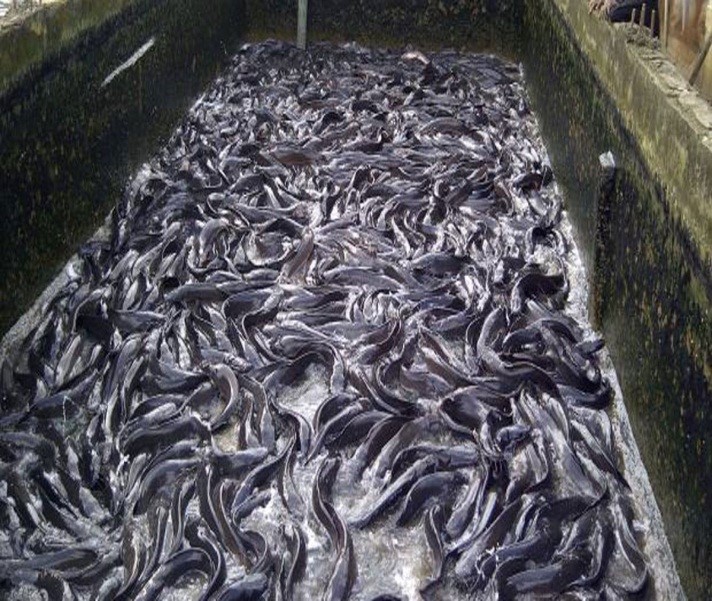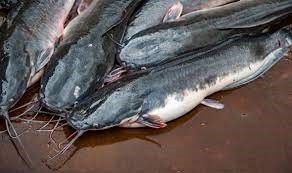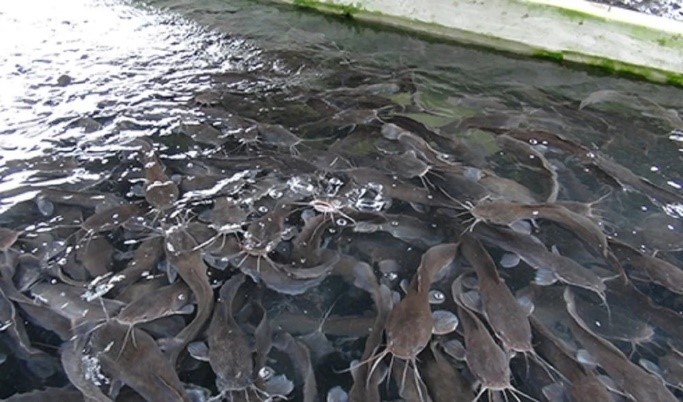FISHERY & AQUACULTURE
FISHERY/AQUACULTURE
FISHERY/AQUACULTURE IN NIGERIA
Nigeria is among the largest fish consumers in the world, with over 1.5 million tons of fish consumed annually, of which over 900,000 metric tons are imported, while its domestic fish catch is estimated at 450,000 metric tons/year. This huge gap in the production of fish serves as a motivation for the government and the private sector to put in measures to increase domestic production. It has been projected that Nigeria needs an average annual increase of 3.8% in fish production to keep up with the demands of an ever-increasing population. This might lead to increased production of African catfish in the country because of relatively good knowledge regarding their culture techniques and high market demands.
The demand and market price for catfish are higher than those for tilapia or carps. Nigeria is the world’s largest producer of African catfish, one of the most commercially important freshwater fish species in Africa. Catfish is the most popular fish on the local market. There is also substantial trade in smoked fish to neighboring countries and to the Nigerian diaspora in the Unites States, Europe and the Middle East.


The construction of fish pond and training of farmers
CONTRIBUTIONS OF ACSVI TO FISHERY/AQUACULTURE DEVELOPMENT IN NIGERIA
ACSVI has for the past four (4) years actively contributed to the fishery/aquaculture development in Nigeria through technical training of farmers and provision of technical assistance for the construction of fish ponds in both rural and urban areas namely Federal Capital Territory, Abuja and Nasarawa State. Over 650 urban and rural famers have benefited from ACSVI fishery/aquaculture training programmes.
This effort has added to the overall development of fishery/aquaculture in Nigeria because the fisheries were known to contribute over 95% of the local fish production.
The focus of ACSVI in the fishery/aquaculture in Nigeria is on fish culture with Clarias and Heterobranchus spp. (catfish), Tilapia spp. (Tilapia), Cyprinus carpio (Common carp), Heterotis niloticus (Slap water) the most commonly cultured species of fish.

assistance before, during, and after the construction of fish ponds and training of fish farmers

Mr. Moses, ACSVI Technician, applying feeds to the Fish pond in the swamp. ACSVI provides technical
assistance before, during, and after the construction of fish ponds and training of fish farmers
The First harvest from the fish pond under the technical assistance and supervision of ACSVI assistance
BENEFITS OF FISHERY/AQUACUTURE DEVELOPMENT
Fishery/aquaculture development in Nigeria has attracted a lot of social and economic benefits such as nutrition improvement in rural areas, generation of supplementary income, diversification of income activities, and the creation of employment. Fish have been identified as a source of inexpensive protein for the nutritional benefit of human beings. Fish production can lead to poverty reduction and ensure food security.
PROSPECTS IN NIGERIA FISHERY/AQUACULTURE
Nigeria is often called the land of aquatic splendor. It has networks of abundant natural water resources namely rivers, lagoons, creeks, streams, flood plains, , reservoirs, dams, free-flowing boreholes, and coastal waters constituting approximately 25% of the total landmass of the country available for fish production. There are huge prospects and potential for the growth of the Nigerian aquaculture sector, as there are numerous freshwater sources. These resources, in addition to 47, 877 ha of swamps are potential biomes for fish farming. Nigeria is blessed with over 12.5 million hectares of water surface which a good percentage could be put to use for aquaculture and development.
Nigeria has what it takes in terms of resources to compete with world-leading aquaculture nations. Some of these potentials include more than 260 medium and large dams. These dams have a combined storage capacity above 30 billion cubic meters of water. The dams can be used for cage and pen aquaculture. More than 850 km of coastline and maritime water of 210,900 km2 including the Exclusive Economic Zone, a narrow continental shelves extending, for only about 15 km in the western area and ranges from 60 to 80 km in the eastern tip. This condition limits the trawl-able grounds to 3200nm2 of the 1147nm2 continental shelf area. The inshore waters (0–50 m) are characterized by a variety of small fish species varying from 25 to 50 cm in total.
The ACSVI is ready for collaborations and partnerships with various ministries and departments of government, local government authorities, farmers’ associations, NGOs, Civil society organizations, etc.


CHALLENGES OF FISHERY/AQUACULTURE IN NIGERIA
Despite these significant roles, the fisheries subsector is faced with huge challenges such as; decreasing yield, inefficient management of fishing policy, financing constraints, inadequate technical and commercial knowledge, inadequate of training of workers in the fishery/agricultural sector among others, thereby limiting its production potentials. Analysis of constraints in the fishery/aquaculture in Nigeria showed that disease infestation (51.5%), water quality (54.4%), Technical expertise (71.4%), high cost of feeding (94.3%), feed quality (57.1%), market availability (60%), inadequate capital (88.6%), and fish seed (62.9%) are constraints to fishery/aquaculture development.
2020 AND 2021: THE DIFFICULT YEARS
These years have been particularly difficult ones for fish farmers, who were badly affected by the ban on the transport of people and goods, and the closure of hotels and catering establishments. However, the farmers have been impressed by the support they’ve received from their representative body.
